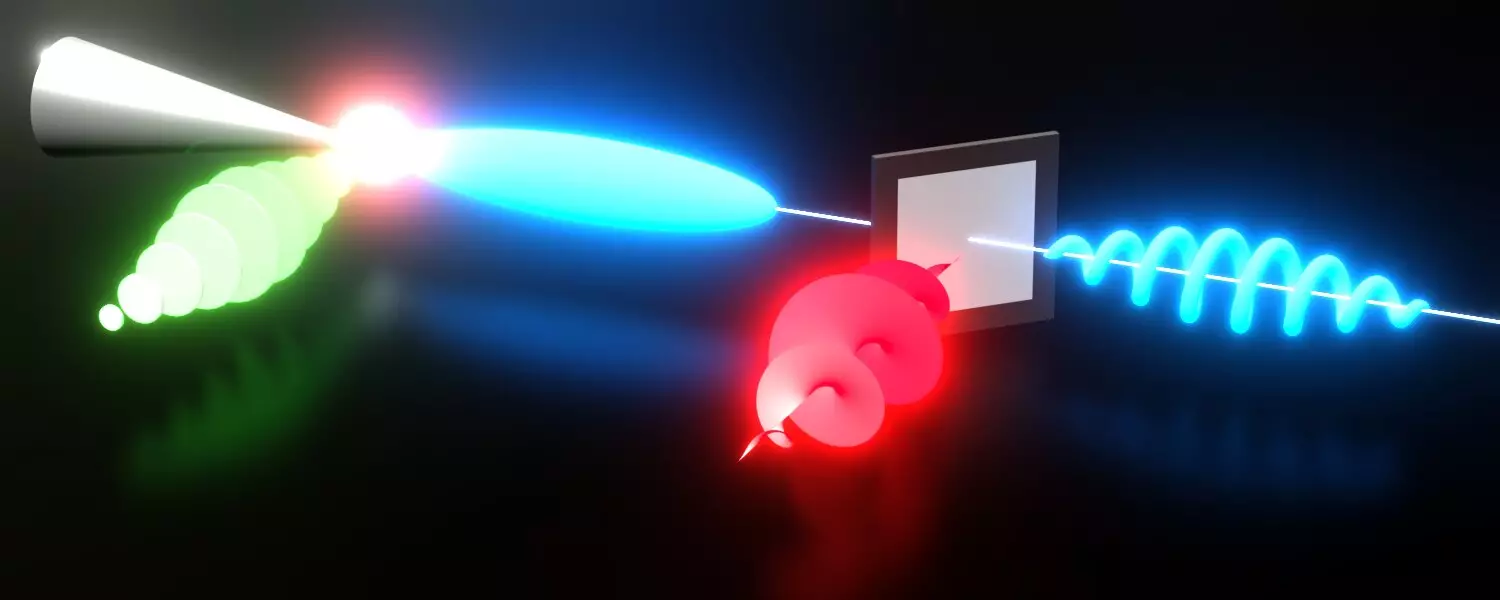Chirality, a property evident in everyday life, describes the asymmetric relationship between objects. It’s a concept that transcends common geometry, reflecting something deeper in nature largely unexplored until recently. For instance, if you place your left hand atop your right, you would notice the thumbs diverge, symbolizing a distinction that fascinates scientists: left-handedness versus right-handedness. Similarly, particles such as electrons exhibit chirality—a profound characteristic that holds the potential to revolutionize our understanding in physics and technology.
Recent advancements at the University of Konstanz have spotlighted this intrigue by imbuing the wave function of a single electron with three-dimensional chirality, a feat that could change the face of quantum mechanics and its applications. Peter Baum and his research group have initiated discussions about unprecedented possibilities that may not have been previously imagined in the realm of science.
The Mechanics of Chirality in Electrons
Chirality extends beyond mere visual forms; in quantum mechanics, it is intrinsically linked with a particle’s spin. An electron, classified as a spin-½ particle, possesses the duality of right-handed and left-handed orientations—an essential characteristic that helps decipher various magnetic phenomena. The revelation that electrons can be manipulated to adopt chiral geometries—a feat accomplished through laser technology—marks a pivotal moment in particle physics. Researchers successfully transformed an electron’s matter wave into twisted forms of charge and mass, offering both theoretical and practical implications.
Consider the analogy of chiral objects in everyday materials. The structures of certain drugs hinge on chirality—one version may serve as a beneficial treatment while another might cause adverse reactions. This delicate balance emphasizes that manipulation of chirality is vital not just for fundamental physics, but also for real-world applications, including pharmaceuticals and materials science.
Innovative Techniques Transforming Physics
The pioneering work in Konstanz used advanced technology—a combination of ultrafast transmission electron microscopy and laser manipulation—to generate and study these chiral structures. In practical terms, the researchers employed femtosecond electron pulses that interacted with specifically modulated laser waves. Through spiral electric fields, the electrons were shaped into distinct chiral patterns without relying on spin or angular momentum.
This innovative methodology signifies a departure from conventional electron manipulation, introducing an approach where the electron’s mass and charge are seamlessly molded into chiral configurations. The implications are enormous: it opens avenues for deeper insights into quantum states, potentially enriching our understanding of matter at fundamental levels and advancing technology in previously unheard-of ways.
Chiral Electrons and Their Venue of Application
The repercussions of the ability to create chiral electron beams stretch across realms of science and technology. For instance, these engineered beams could lead to the development of chiral electron-optical tweezers—tools that could manipulate particles at microscopic scales more precisely than ever before. Additionally, such advancements may enhance chiral sensor technologies, impacting fields from telecommunications to medical diagnostics.
The interplay between chiral light and electron matter waves could catalyze advancements in quantum computing, providing essential ground for creating the next generation of computing technologies. The advantages do not stop there; applications could extend into electron microscopy, enhancing resolution and depth of field which are critical for nanoscale imaging.
Future Perspectives: A Chiral Paradigm Shift
Looking ahead, the researchers at the University of Konstanz strive to explore interactions between their chiral electrons and other chiral materials. The outcomes of these investigations could yield significant insights into the nature of particle interactions and their potential applications in the cosmos. As more particles are explored for their chiral properties, a transformative dialogue about the fundamental nature of the universe emerges—reshaping our understanding of everything from atomic structures to the very fabric of space-time.
This chiral paradigm shift suggests reaching into realms that blend fundamental particle physics with practical applications. By investigating the symmetries and asymmetries that govern particles, scientists stand on the brink of discoveries that could redefine not just our scientific understanding, but the technological capabilities of future generations. As we venture into this terrain, each breakthrough promises to unveil yet another layer of complexity and wonder in the molecular dance of our universe. STEM fields are poised for remarkable transformations, and the interplay of chirality stands at the forefront of that impending evolution.

